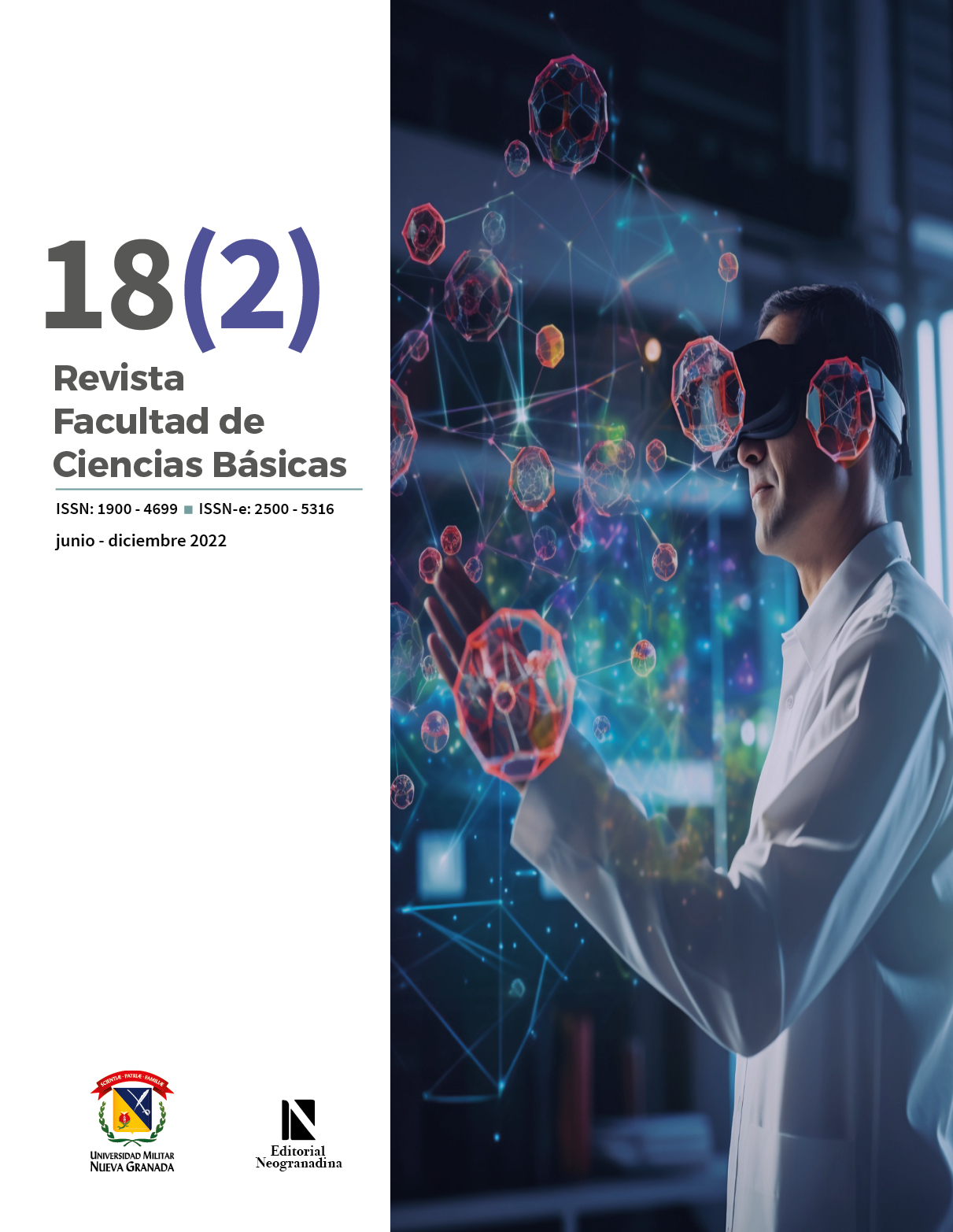Preliminary phytochemical study of petiveria aliacea
Abstract
Traditional medicine has found in some plants, alternatives for the treatment of some health conditions, Petiveria alliacea is a highly commercialized plant for the properties attributed to it, therefore it is important to know the toxicity levels of the most consumed parts of the plant as the root and leaves, which can be evaluated by pharmacological parameters established as the CL50, where bioassays are developed using model organisms such as Artemia Salina, also for the contribution to knowledge of the active principles found in the plant, it is essential to develop recognition reactions. For this purpose, an ethanolic extract was obtained from both the root and the leaves in order to compare the toxicity present in these parts. The tests carried out on the plant were based on the concentrated ethanolic extract where the LC50 was determined at 2.5 mg/ ml, for the ethanolic extract of the root and leaves, there were no significant differences, but this classifies the plant as toxic. The recognition reactions performed detected the presence of alkaloids, flavonoids and carboxylic acids. The sensitivity of Artemia salina to ethanolic extracts proved to be high. This study evaluated the toxicity of the plant and the detection of its active principles, which could contribute to understand the risks and benefits of the use of the plant in traditional medicine.
Downloads
References
F. G. Fonnegra, “Plantas medicinales aprobadas en Colombia”. Universidad de Antioquia, 2007.
L. C. Pabón, M. F. Rodríguez, y P. Hernández-Rodríguez, “Plantas medicinales que se comercializan en Bogotá (Colombia) para el tratamiento de enfermedades infecciosas”, Boletín Latinoamericano y del Caribe de Plantas Medicinales y Aromáticas, vol. 16, n.° 6, pp. 529-546, 2017.
M. D. C. D. Muñoz Guerrero, “Informe quincenal epidemiológico nacional”, IQEN, vol. 22, n.° 2, pp. 32-38, 2017.
M. T. Lemos de Arruda Camargo, “Contribuição Etnofarmacobotánica ao estudo de Petiveria alliacea L. -Phytolacaceae- (“amansa-senhor”) e a atividade hipoglicemiante relacionada a transtornos mentais”, Dominguezia, vol. 23, n.º 1, pp. 21-28.
Mejilla, M. D.,Petiveria alliacea en Kwazulu Natal,Sudáfrica”, Bothalia-Biodiversidad y conservación africanas, vol.43, n.° 1, p.97+,2013. [Internet].Disponible en: https://link.gale.com/apps/doc/A439361881/AONE?u=anon~9656b108&sid=googleScholar&xid=e209af44
J. A. Díaz, “Informe Técnico. Caracterización del mercado colombiano de plantas medicinales y aromáticas”,Humboldt Institute, 2003. [Internet]. Disponible en: https://repository.humboldt.org.co/server/api/core/bitstreams/c6628b35-7ecf-40da-a98d-49b02ff067e9/content
V. M. Fletes-Arjona, A. Soto-Domínguez, R. García-Garza, J. Morán-Martínez, C. Benítez-Valle, A.Castañeda-Martínez, R. Montalvo-González, y E.M. Becerra-Verdín, “Alteraciones Morfológicas en el Tracto Respiratorio de Ratas Wistar Inducidas por Vapores de la Raíz de Hierba del Zorrillo Petiveria alliacea del Suroeste de México”, International Journal of Morphology, vol. 31, n.° 1, pp. 121-127, 2013, http://dx.doi.org/10.4067/S0717-95022013000100019
Echevarría y Torres, Efecto de un extracto de Petiveria Alliacea Lin sobre el crecimiento de Giardia lamblia in vitro, [Internet]. Disponible en: http://scielo.sld.cu/scielo.php?script=sci_arttext&pid=S0138-65572001000300004
R. Pérez-Leal, M. R. García-Mateos, M. Martínez-Vásquez, y M. Soto-Hernández, “Actividad citotóxica y antioxidante de Petiveria alliacea L.”, Revista Chapingo Serie Horticultura, vol. 12, n.° 1, pp. 51-56, 2006. Disponible en: https://www.redalyc.org/articulo.oa?id=60912108. Consultado el 29 de noviembre de 2023
J. R. Shaikh y M. Patil, “Qualitative tests for preliminary phytochemical screening: An overview”, International Journal of Chemical Studies, vol. 8, n.° 2, pp.603-608, 2020.
A. Ochoa Pacheco, J. Marín Morán, D. Rivero Breff, y E. M. Aguilera Saborít, “Caracterización física, físico- química y química de extractos totales de hojas frescas de Petiveria alliacea L. con acción antimicrobiana”, Revista Mexicana de Ciencias Farmacéuticas, vol. 44, n.° 1, pp. 52-59, 2013.
A. Czerwiec, N. Paret, J. Guitton, y S. Cohen, “Intóxication par vératre: description d’un cas grave et identification des alcaloïdes contenus dans la plante”, Toxicologie Analytique et Clinique, 2023. [Internet]. Disponible en: https://doi.org/10.1016/j.toxac.2023.07.001
L. Y. Alvarado-Ávila, Y. B. Moguel-Ordóñez, C. García-Figueroa, F. J. Ramírez-Ramírez y M. E. Arechavaleta-Velasco, “Presencia de alcaloides pirrolizidínicos en miel y los efectos de su consumo en humanos y abejas. Revisión”, Revista mexicana de ciencias pecuarias, vol. 13, n.° 3, pp. 787-802, 2022.
S. Sariego-Frómeta, J. E. Marín-Morán, A. Ochoa- Pacheco, D. Rivero-Breff y O. R. Sariego-Tamayo, “Determinación de metales, fenoles totales y flavonoides totales en extractos de las hojas de Petiveria alliacea L. (anamú)”, Revista CENIC Ciencias Químicas, vol. 46, pp. 155-163, 2015.
D. A. Luz, A. M. Pinheiro, M. L. Silva, M. C. Monteiro, R. D. Prediger, C. S. Ferraz Maia y E. A. Fontes-Júnior, “Ethnobotany,
hytochemistry and neuropharmacological effects of Petiveria alliacea L. (Phytolaccaceae): A review”, Journal of Ethnopharmacology, vol. 185, pp. 182-201, 2016.
D. S. B. de Oliveira y R. da Silva Ramos, “Estudo fitoquímico, atividade microbiológica e citotóxica em artemia salina leach. Das partes aéreas de Petiveria alliacea L. Phytolaccaceae”, Biota Amazônia, vol. 3, n.° 3, pp. 76-82, 2013.
S. Hernández-Doño et al., «Actividad larvicida de especies vegetales de la flora salvadoreña para el control de Aedes aegypti,» Rev. Minerva, vol. 3, no. 1, pp. 65-80, 2020.

Copyright (c) 2024 Revista Facultad de Ciencias Básicas

This work is licensed under a Creative Commons Attribution-NonCommercial-NoDerivatives 4.0 International License.











